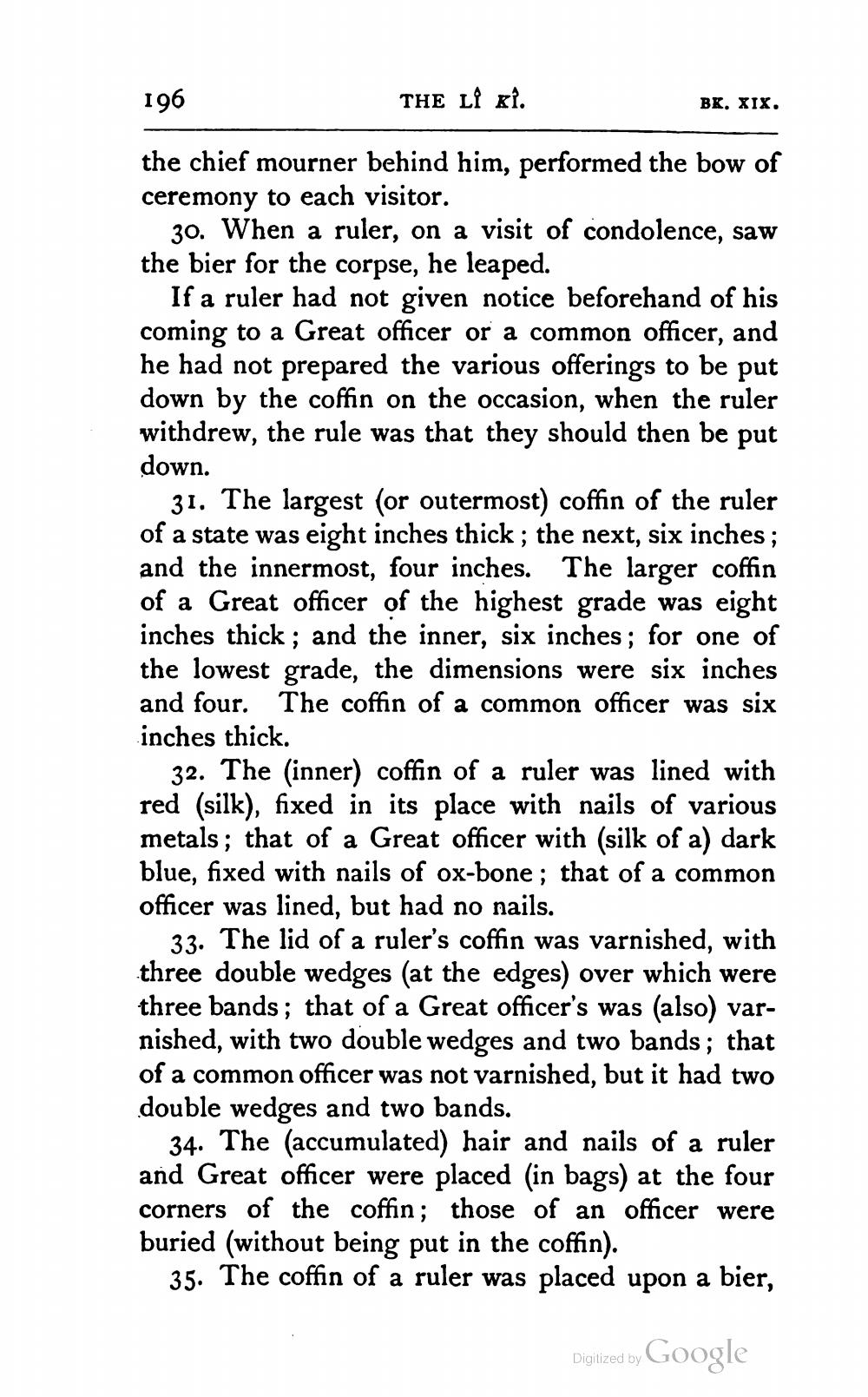________________
196
THE LÎ xi.
BK. XIX.
the chief mourner behind him, performed the bow of ceremony to each visitor.
30. When a ruler, on a visit of condolence, saw the bier for the corpse, he leaped.
If a ruler had not given notice beforehand of his coming to a Great officer or a common officer, and he had not prepared the various offerings to be put down by the coffin on the occasion, when the ruler withdrew, the rule was that they should then be put down.
31. The largest (or outermost) coffin of the ruler of a state was eight inches thick ; the next, six inches; and the innermost, four inches. The larger coffin of a Great officer of the highest grade was eight inches thick ; and the inner, six inches; for one of the lowest grade, the dimensions were six inches and four. The coffin of a common officer was six inches thick.
32. The (inner) coffin of a ruler was lined with red (silk), fixed in its place with nails of various metals; that of a Great officer with (silk of a) dark blue, fixed with nails of ox-bone; that of a common officer was lined, but had no nails.
33. The lid of a ruler's coffin was varnished, with three double wedges (at the edges) over which were three bands; that of a Great officer's was (also) varnished, with two double wedges and two bands; that of a common officer was not varnished, but it had two double wedges and two bands.
34. The accumulated) hair and nails of a ruler and Great officer were placed (in bags) at the four corners of the coffin; those of an officer were buried (without being put in the coffin).
35. The coffin of a ruler was placed upon a bier,
Digitized by Google




